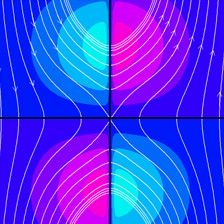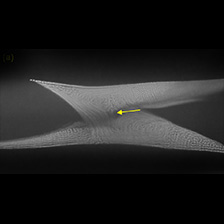
Magnetized Plasmas
Astrophysical jets, Solar Coronal Loops, Spheromaks, Magnetized Target Fusion
Magnetized plasmas have a magnetic field frozen into the plasma and in many cases an electric current flowing in the plasma. The magnetic field provides a shape to the plasma and forces resulting from the electric current can confine high plasma pressure or accelerate the entire plasma and its frozen-in field. In some cases the forces act to self-organize the plasma into a very specific shape with examples being spheromaks a fusion confinement concept and solar corona loops. Astrophysical jets and magnetized target fusion are examples where the entire plasma and its frozen-in magnetic field are accelerated by magnetic forces. >>

Fundamental Processes
Experiments stimulate new theories and vice versa. We develop theoretical ideas in parallel with the experiments and apply these ideas to more general situations. For example, wave concepts developed to explain lab observations have been applied to spacecraft measurements of similar waves occurring in Earth’s magnetosphere. Because the frontier of plasma parameters and plasma phenomena under experimental investigation is continuously advancing, we are continuosly developing new diagnostics. Examples are a movie camera which images extreme ultraviolet radiation at several million frames per second and a magnetic probe array which measures the spatial-temporal dependence of the rapidly changing, complex shape magnetic field in a laboratory replication of a solar corona loop. >>

Dusty Plasmas
When a micron-size particle is immersed in a plasma, this particle (dust grain) is bombarded by the electrons and ions constituting the plasma. Since electrons typically move much faster than ions the flux of electrons onto the dust grain is much greater than the ion flux and so the dust grain becomes negatively charged. The dust grain can then be thought of as a third type of charged particle so the charged particles making up the plasma are now electrons, ions, and dust grains. Because the dust grains are much heavier than an electron or ion, they move more slowly and so the behavior of the entire plasma changes and becomes more complicated. There are many different situations such as the dust grains capturing nearly all the free electrons, the dust grains being large or small in number, and the dust grains being physically large or small. Dusty plasmas occur in nature with examples being noctilucent clouds in the Earth’s upper atmosphere, Saturn’s diffuse rings, and certain accretion disks orbiting new-born stars. >>